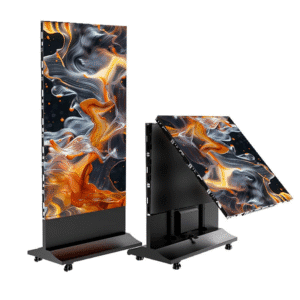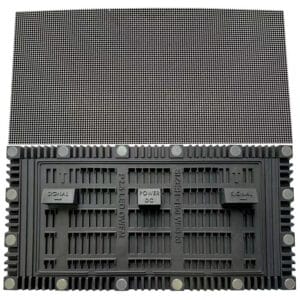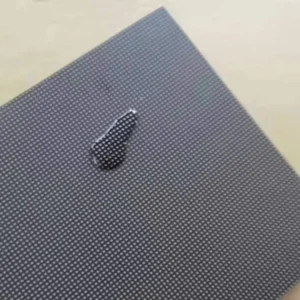LED Screens for Events
When it comes to LED screens, their use in events is undisputed, motor show,whether at concerts, fashion shows, exhibitions, or sporting events, LED screens can add a unique visual experience and appeal to an event. At HARSE LED-CITY we offer a wide range of LED screen solutions to suit the needs of your event.
LED display price
Just fill the sizes, and get your led screen budget right now !
High-Quality Rental LED Display To Boost Your Business
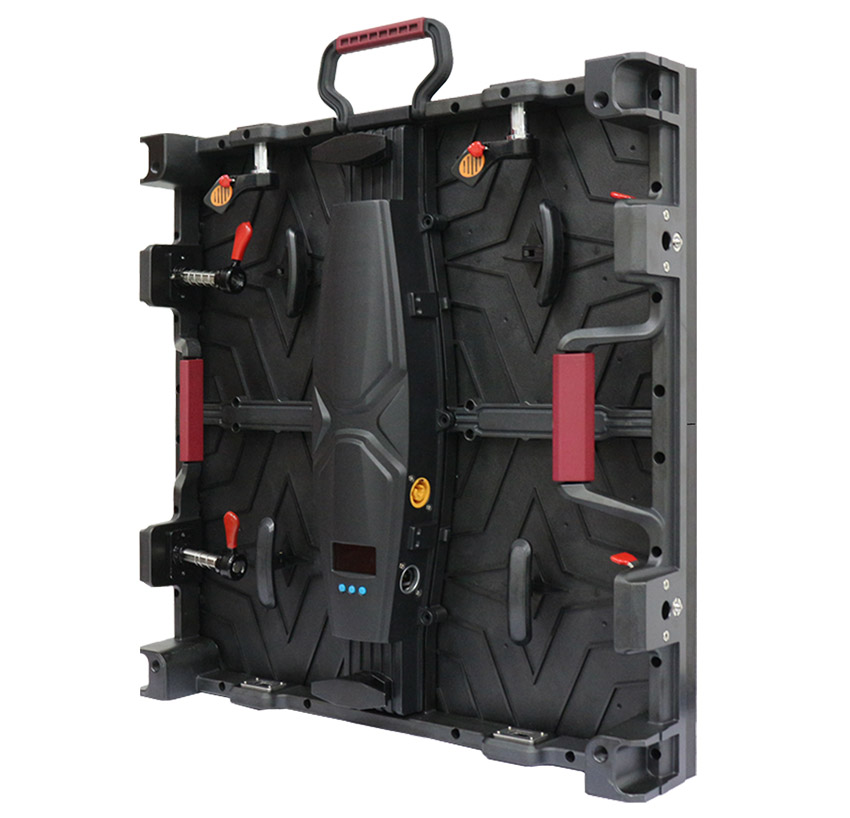
HARSE LED know-how LED screen experts to use cutting-edge technology to design the best rental LED display. The rental LED displays vast pixel pitches, including P2.5, P2.6, P2.8, P2.9, P3.91, P4.8, and more. The stage LED shape can be concave, convex, and curved based on your stage needs.
HARSE provides you high-quality rental LED display with 5% Module Spare Parts,. It has a 100,000 hours lifespan, which means you can use the LED screen for rent in 8-10 years. It’s your precious investment that has significant and continuous ROI.
Latest Series of LED Rental Screen Soft Connection
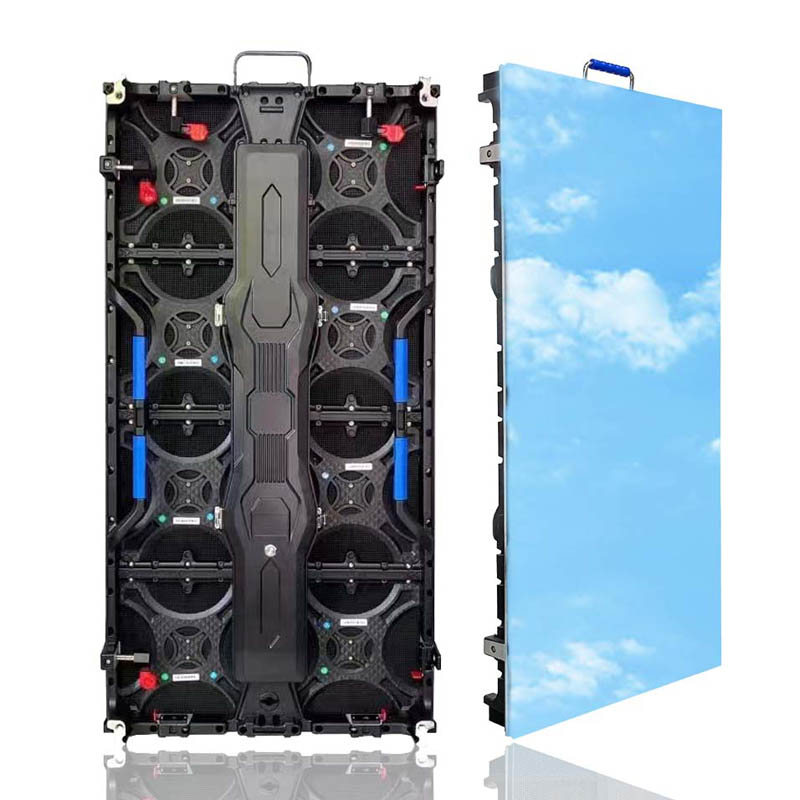
Event led screen is used in different occasions
HX500/1000 Series
500*500/1000mm LED Display Cabinet
P1.953mm, P2.604mm, P2.976mm, P3.91mm, P4.81mm
Support curved Installation and right-angle installation
Frontal & Rear Service for Indoor. Rear Service for Outdoor
3 Years Warranty and 5% Spare Part
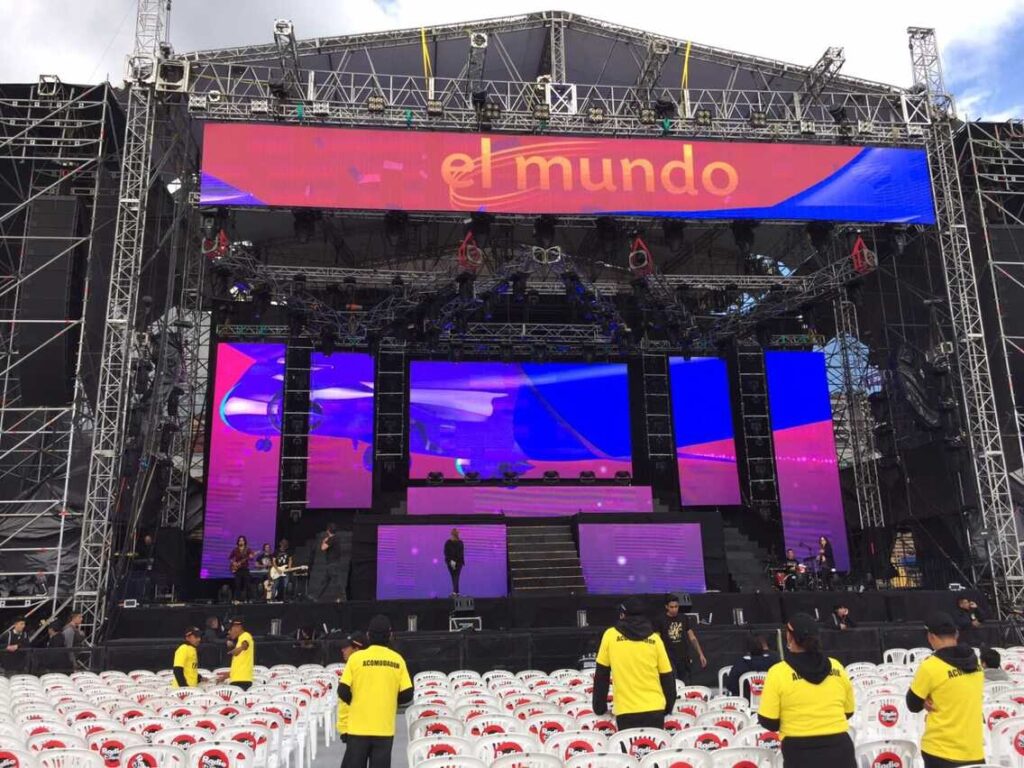
Event led screen is used in different occasions
HARSE LED outdoor rental and indoor rental LED displays are widely used in events on various occasions, which can bring shocking visual effects to your activities and increase your profits. Application events such as Video production, marketing events, trade shows, grand openings, fashion runways, corporate events, birthday parties, weddings, concert stages, etc.
The Rise of LED display Technology in Event Production
Portability
LED Rental LED displays are usually shipped in an air box case to prevent bump damage and facilitate transportation, and the LED display case is designed to be lightweight and portable for quick installation and removal. This makes them ideal for a variety of event venues such as concerts, exhibitions, weddings, car shows, product launches, etc. in both indoor and outdoor locations.
Customizability
LED screen rental can be customized according to the needs of the site, according to the use of the environment, including indoor rental LED display, outdoor LED display, flexible LED display, transparent LED display, floor LED display and customized creative LED display; according to the use of the specifications and models, including the size, resolution, shape and so on.
High-definition
Accurate color reproduction is essential for creating immersive visual experiences. LED screens use various color processing technologies to deliver wide color gamuts, often exceeding traditional display standards. Many event-grade LED screens can reproduce over a billion colors, providing event designers with an extensive palette to work with.
Ease of operation
LED display are usually equipped with a user-friendly operating interface and remote control system for convenient operation and management. Even non-professionals can operate it easily and quickly learn how to use it.
Versatility
LED video walls can be used for multiple purposes such as displaying event schedules, playing multimedia content, providing real-time information, etc. They can also be used in conjunction with sound systems, lighting effects, and other equipment to create a richer and more vivid event atmosphere.
Reliability
High-quality LED screens usually use high-quality materials and advanced manufacturing processes, with good durability and stability. They can operate normally in a variety of climate and environmental conditions, ensuring the smooth progress of events.
LED Rental Display
This cabinet supports fine pixel pitches including P1.953, P2.604, P2.976, P3.91 and P4.91. The high-definition LED cabinet supports 600-800nits for indoor screens and 4500-5000nits for outdoor screens, and high refresh rate from 3840Hz to 7680Hz.
Immersive LED Display
Every company wants to improve profits and have more potential customers, which seems obvious. However, how to do can be a question that is not easy to answer. But, here is an almost certain answer – applying some innovative but effective advertising displays to your projects like LED immersive display!
The Ultimate Guide to Buy LED Displays for Events
ating Your ExperienceThe world of event production has been revolutionized by the advent of LED screen technology. These vibrant displays have become an integral part of concerts, conferences, sports events, and more, offering unparalleled visual experiences to audiences. This comprehensive guide will explore everything you need to know about LED screens for events, from their basic functionality to advanced applications and future trends.
As event organizers and planners increasingly recognize the impact of high-quality visual displays, LED screens have emerged as the go-to solution for creating immersive and engaging environments. Their versatility, brightness, and ability to deliver crisp images even in challenging lighting conditions make them an invaluable asset for any event.
In this guide, we’ll delve into the technical aspects of LED screens, discuss their various applications in different types of events, explore the factors to consider when choosing the right LED display for your needs, and examine the latest innovations shaping the future of event visuals. Whether you’re a seasoned event professional or new to the world of LED technology, this article will provide you with valuable insights to elevate your next event to new heights of visual excellence.
- Understanding LED Screen Technology
- Applications of LED Screens in Various Event Types
- Factors to Consider When Choosing LED Screens for Events
- Installation and Setup of LED Screens for Events
- Content Creation and Management for LED Screens
- Maintenance and Troubleshooting of LED Screens
- Future Trends in LED Screen Technology for Events
- Case Studies: Successful Implementation of LED Screens at Events
- Conclusion
1.Understanding LED Screen Technology
LED screen technology has come a long way since its inception, evolving into a sophisticated and versatile medium for visual communication. At its core, an LED screen consists of numerous light-emitting diodes (LEDs) arranged in a grid pattern. These tiny semiconductor devices emit light when an electric current passes through them, creating the vibrant images we see on the screen.
The Basics of LED Screens
LED screens are composed of individual pixels, each containing red, green, and blue (RGB) LEDs. By varying the intensity of these three colors, LED screens can produce a wide spectrum of hues, resulting in vivid and lifelike images. The density of these pixels, measured in millimeters (mm) and referred to as pixel pitch, determines the resolution and viewing distance of the screen.
One of the key advantages of LED screens is their ability to produce high levels of brightness, making them suitable for both indoor and outdoor applications. This brightness is measured in nits, with higher nit values indicating brighter displays that can compete with ambient light, even in direct sunlight.
Types of LED Screens for Events
When it comes to event applications, there are several types of LED screens to choose from, each with its own set of characteristics and benefits:
Fixed LED Screens: These permanent installations are ideal for venues that regularly host events, such as stadiums, concert halls, and conference centers.
Rental LED Screens: Designed for temporary use, these modular screens can be easily assembled and disassembled, making them perfect for touring productions and one-off events.
Flexible LED Screens: These innovative displays can be curved or shaped to fit unique architectural elements, adding a dynamic visual element to stage designs and event spaces.
Transparent LED Screens: These see-through displays allow for creative layering effects and can be integrated seamlessly into set designs without obstructing views.
LED Video Walls: Consisting of multiple LED panels arranged to form a large, seamless display, video walls are popular for creating immersive backdrops and high-impact visuals.
Understanding the different types of LED screens available will help event organizers make informed decisions when selecting the most appropriate display for their specific needs.
2.Applications of LED Screens in Various Event Types
LED screens have found their way into virtually every type of event, enhancing the visual experience and engagement of attendees across diverse settings. Let’s explore how these versatile displays are being utilized in different event categories:
Concerts and Music Festivals
In the music industry, LED screens have become an essential component of stage design and visual storytelling. Artists and production designers use these displays to create immersive environments that complement the music and elevate the overall concert experience. From massive backdrop screens displaying live close-ups of performers to intricate LED set pieces that move and transform throughout the show, the possibilities are endless.
Music festivals often feature multiple stages equipped with LED screens of various sizes and configurations. These displays not only enhance the visual spectacle but also serve practical purposes such as displaying set times, artist information, and important announcements to large crowds.
Corporate Events and Conferences
For corporate events and conferences, LED screens play a crucial role in information dissemination and branding. Large-format displays are commonly used for keynote presentations, product launches, and panel discussions, ensuring that even attendees in the back of the room can clearly see the content being presented.
Interactive LED walls are gaining popularity in exhibition spaces, allowing companies to showcase their products and services in dynamic and engaging ways. These displays can feature touch-screen capabilities, enabling attendees to interact with content and explore information at their own pace.
Sports Events
Stadiums and arenas have embraced LED technology to enhance the fan experience during sporting events. Massive LED scoreboards provide real-time game statistics, instant replays, and close-up shots of the action. Perimeter LED displays around playing fields offer additional advertising opportunities and can be used to display dynamic content that adds to the excitement of the game.
Even smaller venues are incorporating LED screens to create a more immersive atmosphere for spectators. From boxing matches to esports tournaments, these displays help to build anticipation and engage audiences before, during, and after the main event.
Trade Shows and Exhibitions
In the competitive environment of trade shows and exhibitions, LED screens help exhibitors stand out from the crowd. Eye-catching displays can attract visitors to booths and effectively communicate brand messages in a visually appealing manner. Interactive LED walls allow companies to showcase their products and services in innovative ways, creating memorable experiences for potential customers.
Large-scale LED screens are also used in common areas of exhibition halls to display event information, sponsor messages, and wayfinding details, enhancing the overall attendee experience.
3.Factors to Consider When Choosing LED Screens for Events
Selecting the right LED screen for your event requires careful consideration of several factors. By taking these elements into account, you can ensure that your chosen display will meet the specific needs of your event and deliver the desired visual impact.
Screen Size and Resolution
The size of the LED screen should be proportional to the venue and the number of attendees. A screen that’s too small may be difficult to see from a distance, while an overly large screen can overwhelm the space. Consider the viewing distance of your audience and choose a screen size that provides optimal visibility for all attendees.
Resolution is equally important, as it determines the clarity and detail of the displayed content. Higher resolution screens offer sharper images but come at a higher cost. The required resolution depends on the type of content you’ll be displaying and the viewing distance of your audience.
Indoor vs. Outdoor Considerations
If your event is taking place outdoors, you’ll need to choose LED screens specifically designed for external use. These displays are built to withstand various weather conditions and offer higher brightness levels to compete with sunlight. For indoor events, screens with lower brightness levels may be sufficient, as they don’t need to contend with ambient light.
Consider factors such as IP rating (which indicates the screen’s resistance to dust and water), operating temperature range, and the ability to adjust brightness levels based on ambient light conditions.
Pixel Pitch and Viewing Distance
Pixel pitch, the distance between the centers of adjacent pixels, is a crucial factor in determining the optimal viewing distance for an LED screen. Screens with a smaller pixel pitch offer higher resolution and can be viewed from closer distances without losing image quality. However, they also come at a higher cost.
For large venues where the audience is situated far from the screen, a larger pixel pitch may be sufficient. Conversely, for intimate events or situations where attendees will be close to the display, a smaller pixel pitch is essential for maintaining image clarity.
Power and Connectivity Requirements
Ensure that your chosen LED screen is compatible with the power supply available at your event venue. Consider the total power consumption of the display and any additional equipment required to run it. It’s also important to factor in backup power solutions to prevent unexpected outages during your event.
Connectivity is another crucial aspect to consider. Determine what types of inputs the LED screen supports and ensure that it’s compatible with your content sources, such as media servers, laptops, or live camera feeds. Some screens offer built-in processing capabilities, while others may require external processors or scalers.
Budget Considerations
While it’s tempting to opt for the highest quality LED screen available, it’s essential to balance your visual requirements with your budget constraints. Consider not only the upfront costs of purchasing or renting the screen but also additional expenses such as transportation, installation, and operation.
Keep in mind that investing in a high-quality LED screen can significantly enhance the overall impact of your event, potentially leading to greater attendee satisfaction and better outcomes for your organization or clients.
4.Installation and Setup of LED Screens for Events
Proper installation and setup of LED screens are crucial for ensuring optimal performance and safety during your event. This process involves several key steps and considerations:
Site Survey and Planning
Before installation begins, a thorough site survey should be conducted to assess the venue’s layout, power availability, and any potential obstacles or challenges. This information will help determine the best location for the LED screen and any additional support structures required.
During the planning phase, consider factors such as viewing angles, potential glare from natural or artificial light sources, and the integration of the screen with other event elements such as stage design or existing architecture.
Structural Support and Rigging
LED screens, especially large-format displays, require robust structural support to ensure safety and stability. This may involve the use of truss systems, ground support structures, or custom-built frames depending on the venue and screen configuration.
For suspended screens, proper rigging techniques are essential. This typically involves the use of certified rigging professionals who can calculate load capacities, select appropriate hardware, and ensure compliance with safety regulations.
Cabling and Power Distribution
Efficient cable management is crucial for both safety and aesthetics. Plan the routing of power and signal cables to minimize trip hazards and ensure clean, professional-looking installations. Use cable ramps or covers in areas where cables must cross walkways.
Power distribution should be carefully planned to ensure stable and sufficient electrical supply to the LED screen and associated equipment. This may involve the use of dedicated power generators or tapping into the venue’s existing power infrastructure.
Calibration and Testing
Once the LED screen is physically installed, it must be calibrated to ensure optimal image quality. This process involves adjusting color balance, brightness levels, and other display parameters to achieve consistent performance across the entire screen surface.
Thorough testing should be conducted before the event to identify and resolve any issues with image quality, content playback, or system stability. This includes running through all planned content and scenarios to ensure smooth operation during the live event.
5.Content Creation and Management for LED Screens
Creating compelling content for LED screens is essential for maximizing their impact at your event. Here are some key considerations for content creation and management:
Designing for LED Displays
When creating content for LED screens, it’s important to consider the unique characteristics of these displays. Design elements should be bold and high-contrast to ensure visibility, especially for outdoor events where ambient light may be a factor.
Text should be large and legible, with appropriate spacing to account for the pixel structure of LED screens. Avoid using very fine details or intricate patterns that may not render well on lower-resolution displays.
Video Production Considerations
For video content, consider the native resolution of your LED screen and produce content that matches these specifications to avoid scaling issues. Be mindful of the screen’s aspect ratio and design your content accordingly to make full use of the available display area.
When filming content specifically for LED screens, use high-quality cameras and lighting to ensure that the footage looks crisp and vibrant when displayed on the large format.
Interactive Content and Live Feeds
Interactive content can greatly enhance audience engagement at events. Consider incorporating social media feeds, live polls, or interactive games that attendees can participate in using their mobile devices.
For events featuring live performances or presentations, ensure that your content management system can seamlessly switch between pre-produced content and live camera feeds.
Content Management Systems
Investing in a robust content management system (CMS) is crucial for smooth operation during your event. Look for systems that offer features such as:
- Easy scheduling and playback of content
- Real-time content updates
- Multi-screen synchronization
- Integration with various content sources (e.g., live cameras, social media feeds)
- Remote management capabilities
Choose a CMS that is user-friendly and allows for quick adjustments during the event if needed.
6.Maintenance and Troubleshooting of LED Screens
To ensure the longevity and reliable performance of LED screens, proper maintenance and troubleshooting procedures are essential. Here are some key aspects to consider:
Regular Maintenance Procedures
Implement a regular maintenance schedule that includes:
- Cleaning the screen surface to remove dust and debris
- Checking and tightening electrical connections
- Inspecting structural components for any signs of wear or damage
- Updating firmware and software as recommended by the manufacturer
For rental equipment, work closely with your provider to ensure that proper maintenance is carried out between events.
Common Issues and Solutions
Familiarize yourself with common issues that may arise with LED screens and their potential solutions:
- Dead pixels: Identify and replace faulty LED modules
- Color inconsistencies: Recalibrate the screen or adjust individual modules
- Signal loss: Check cable connections and signal processing equipment
- Overheating: Ensure proper ventilation and monitor operating temperatures
Having spare parts and modules on hand can help quickly resolve issues during an event.
On-Site Technical Support
For large events or those heavily reliant on LED screen technology, it’s advisable to have on-site technical support available. This can be in the form of in-house technicians or support provided by the LED screen rental company.
Ensure that technical staff are familiar with the specific equipment being used and have access to necessary tools and spare parts.
7.Future Trends in LED Screen Technology for Events
The world of LED screen technology is constantly evolving, with new innovations promising to enhance the capabilities and applications of these displays in event settings. Here are some emerging trends to watch:
Micro LED Technology
Micro LED displays offer even higher resolution and improved energy efficiency compared to traditional LED screens. As this technology becomes more accessible, it has the potential to revolutionize event visuals with ultra-high-definition displays that can be seamlessly integrated into various environments.
Flexible and Shapeable Displays
Advancements in flexible LED technology are enabling the creation of curved and uniquely shaped displays that can conform to various surfaces and structures. This opens up new possibilities for creative stage designs and immersive event environments.
AI-Powered Content Optimization
Artificial intelligence is being incorporated into content management systems to optimize visual content in real-time based on factors such as audience engagement, ambient lighting conditions, and event schedules.
Augmented Reality Integration
The integration of LED screens with augmented reality (AR) technology is creating new opportunities for interactive experiences at events. This could include AR overlays on live video feeds or interactive elements that respond to audience movements.
Sustainable LED Solutions
As environmental concerns become increasingly important, manufacturers are developing more energy-efficient LED screens and exploring the use of sustainable materials in their production.
8.Case Studies: Successful Implementation of LED Screens at Events
Examining real-world examples of successful LED screen implementations can provide valuable insights and inspiration for your own events. Here are a few case studies that showcase innovative uses of LED technology:
Music Festival Main Stage
A major music festival implemented a massive, curved LED screen as the backdrop for its main stage. The screen’s unique shape and high-resolution display allowed for immersive visuals that complemented each artist’s performance. The flexibility of the LED panels enabled quick content changes between sets, maintaining audience engagement throughout the event.
Corporate Product Launch
A tech company used a combination of large LED walls and smaller, interactive LED displays for a product launch event. The main stage featured a high-resolution LED backdrop for keynote presentations, while smaller LED screens throughout the venue allowed attendees to explore product features through interactive demos.
Sports Arena Upgrade
A professional sports team upgraded their arena with a state-of-the-art LED display system, including a center-hung scoreboard and 360-degree ribbon boards. The new system not only enhanced the fan experience with high-quality replays and statistics but also provided new opportunities for sponsor activations and in-game entertainment.
Trade Show Exhibit
An automotive manufacturer created a stunning trade show exhibit using a combination of curved LED walls and transparent LED screens. The display allowed visitors to see physical car models through the transparent screens while overlaying dynamic information and graphics, creating an engaging and informative experience.
9.Conclusion
LED screens have become an indispensable tool in the world of event production, offering unparalleled visual impact and versatility across a wide range of applications. From concerts and corporate events to sports arenas and trade shows, these displays have the power to transform spaces and create memorable experiences for attendees.
As technology continues to advance, we can expect to see even more innovative uses of LED screens in event settings. The integration of AI, AR, and other cutting-edge technologies promises to push the boundaries of what’s possible, opening up new avenues for creativity and audience engagement.
When planning your next event, consider how LED screens can elevate your visual presentation and enhance the overall attendee experience. By carefully considering factors such as screen type, size, resolution, and content creation, you can harness the full potential of LED technology to create truly impactful events.
Whether you’re a seasoned event professional or new to the world of LED displays, staying informed about the latest trends and best practices in this rapidly evolving field will help you make the most of these powerful visual tools. With the right approach, LED screens can become a cornerstone of your event strategy, helping you deliver unforgettable experiences that leave a lasting impression on your audience.
Send Us A Message
To learn more about how LED display for events can transform your business, schedule a consultation with one of our audiovisual experts today!

